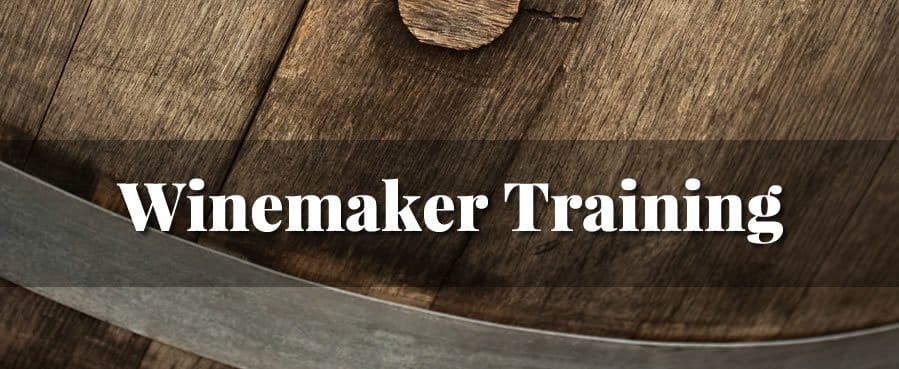History of Winemaking
We have been making wine for ten thousand years. For much of that time, winemaking has played an outsized role in our lives. It has been an economic engine since before the Roman Empire and an essential part of many religions. Today, dozens of countries make wine on a commercial scale, and the demand for the drink keeps rising.
Wine is an artisanal beverage made with care. But it can also be a standardized industrial product. Both are fermented grapes: the difference lies in the winemaker’s intent and her audience. So, how’s a wine made? And what’s the difference between an eight-dollar bottle of wine and one that runs for a few hundred?

All Wines Start in the Vineyard
The Vineyard
It all starts in the vineyard; a ton of grapes can cost a few hundred dollars or several thousand depending on the grapes. At it’s most basic, quality is measured in Brix (sugar), pH (acidity) and phenolic maturity (ripeness of the skins). A winemaker is seeking grapes that will produce delicious and complex wines.
In the wine trade, one of the best ways to source high-quality grapes is to focus on specific vineyards. Soil, vine orientation, and microclimate each play a role in determining whether a vineyard will produce mediocre or magnificent wines. The best grapes will become premium wines, and the mediciocre will probably end up as supermarket value brands.
In either case, when the time is right, the winemaker will call to harvest and the race to make wine begins.
The Crush
How grapes are harvested is another price differential. Mechanical harvesting is less expensive than having a dozen specialized people picking clusters by hand. Of course, a machine can’t tell whether the grapes are healthy or not, at least not as a professional picker can. Workers haul the grapes to a truck; using small boxes that don’t allow the grapes to crush each other. Often, the harvest is done before the sun rises, transporting the grapes back to the winery while the grapes retain an evening chill.

Grape Sorting During Crush
Once at the winery, the grapes must be sorted and separated from MOG (or material other than grapes), like leaves, and sticks. Rotten, underripe or damaged fruit will also be discarded. The grapes then will pass through a crusher-destemmer machine and pumped into fermentation vats. The winemaker can then choose to leave the grapes to sit for a while, leaching color and tannins before fermentation or go directly into the winemaking process. The resulting grape juice is called the must
Alcoholic fermentation is the process in which yeast (a fungus) consumes the sugar in the must. The main byproducts are alcohol and CO2. The reaction also generates quite an amount of heat but fermenting grape juice is more than letting it sit around, especially when making red wine; you must continuously punch down the cap that forms from the grape skins.
Closely monitoring the must weight tells the winemaker how much alcohol has been transformed and how much sugar is left. Once the sugars have fermented out, the wine moves on.
Winemaking Programs
If you are interested in winemaking programs, we offer an annual program for our students. You have to pass the Core Wine Program to quality.
Malo
The winemaker faces another decision, allowing a secondary fermentation, called malolactic fermentation, where lactic bacteria transforms the sharp tartaric acid present in wine, into mellow lactic acid. For reds, it’s a given, for whites, it is entirely optional. Have you ever tried those buttery, creamy and coating wines made from Chardonnay? They’ve experienced malolactic fermentation, which in the trade we call “Malo” for short. It may take months for Malo to complete.

Wine Barrels Stored at a Winery
Oak Barrels
After about a year, wines will be ready to bottle. But first, they will need to be filtered and clarified before being bottled. For that time in storage, what they are held in matters. Inexpensive reds and whites are often stored in stainless steel vats.
Most premium wines are rested in a white oak barrel. Oak is a noble wood: permeable, flexible, but water-resistant, it’s ideal for making barrels, It has other peculiar properties too. It can impart spicy aromas and scents of smoke and vanilla to the wine. The longer the wine sits inside an oak barrel –and the newer the barrel–the more it will take in those lovely aromas.
Oak barrels are quite expensive. A new French-oak barrel can cost up to $2,000, and a winemaker needs dozens if not hundreds of them every year. No wonder why some bottles have a three-figure price tag!
The End Result
At the end of the day, decisions, from the vineyard to the bottle, make a wine worth your money or not. Premium wines are handmade and usually come in small quantities, elevating the price even more. You can tell when there’s passion behind a bottle of wine, and passion is always a good buy.
The post Winemaking 101 appeared first on Wine School of Philadelphia.
source https://www.vinology.com/winemaking-101/

No comments:
Post a Comment